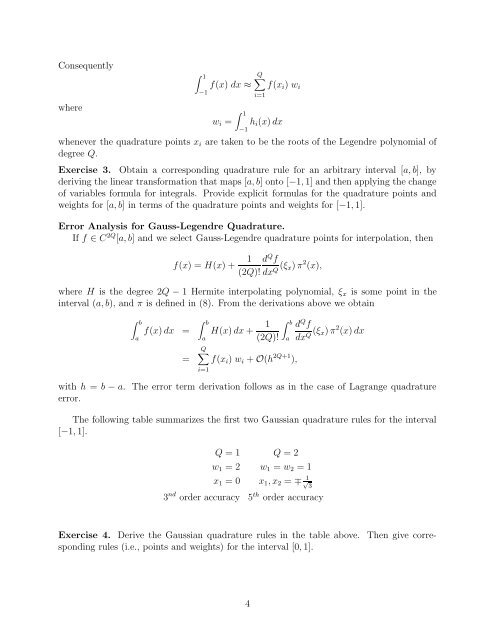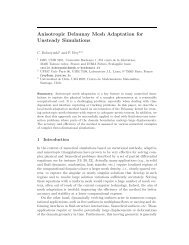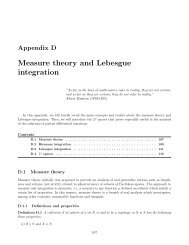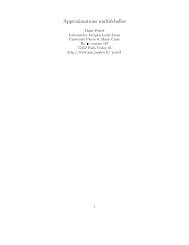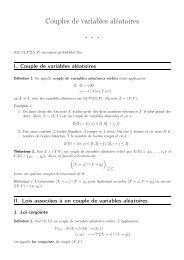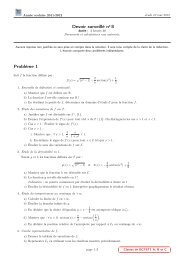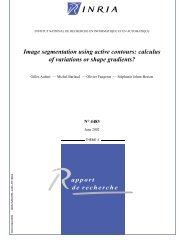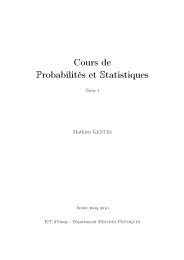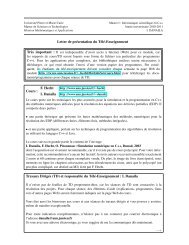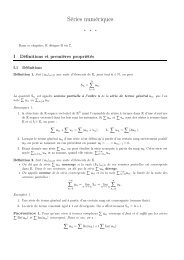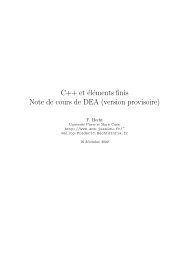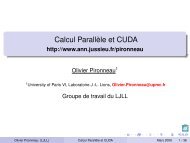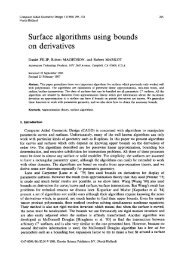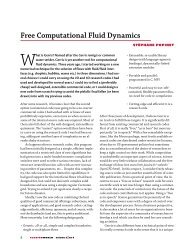Hermite Interpolating Polynomials and Gauss-Legendre Quadrature
Hermite Interpolating Polynomials and Gauss-Legendre Quadrature
Hermite Interpolating Polynomials and Gauss-Legendre Quadrature
You also want an ePaper? Increase the reach of your titles
YUMPU automatically turns print PDFs into web optimized ePapers that Google loves.
Consequently<br />
where<br />
1<br />
Q<br />
f(x) dx ≈ f(xi) wi<br />
−1<br />
i=1<br />
wi =<br />
1<br />
−1<br />
hi(x) dx<br />
whenever the quadrature points xi are taken to be the roots of the <strong>Legendre</strong> polynomial of<br />
degree Q.<br />
Exercise 3. Obtain a corresponding quadrature rule for an arbitrary interval [a, b], by<br />
deriving the linear transformation that maps [a, b] onto [−1, 1] <strong>and</strong> then applying the change<br />
of variables formula for integrals. Provide explicit formulas for the quadrature points <strong>and</strong><br />
weights for [a, b] in terms of the quadrature points <strong>and</strong> weights for [−1, 1].<br />
Error Analysis for <strong>Gauss</strong>-<strong>Legendre</strong> <strong>Quadrature</strong>.<br />
If f ∈ C 2Q [a, b] <strong>and</strong> we select <strong>Gauss</strong>-<strong>Legendre</strong> quadrature points for interpolation, then<br />
f(x) = H(x) + 1 d<br />
(2Q)!<br />
Qf dxQ (ξx) π 2 (x),<br />
where H is the degree 2Q − 1 <strong>Hermite</strong> interpolating polynomial, ξx is some point in the<br />
interval (a, b), <strong>and</strong> π is defined in (8). From the derivations above we obtain<br />
b<br />
a<br />
f(x) dx =<br />
=<br />
b<br />
a<br />
Q<br />
i=1<br />
H(x) dx + 1<br />
b d<br />
(2Q)! a<br />
Qf dxQ (ξx) π 2 (x) dx<br />
f(xi) wi + O(h 2Q+1 ),<br />
with h = b − a. The error term derivation follows as in the case of Lagrange quadrature<br />
error.<br />
The following table summarizes the first two <strong>Gauss</strong>ian quadrature rules for the interval<br />
[−1, 1].<br />
Q = 1 Q = 2<br />
w1 = 2 w1 = w2 = 1<br />
x1 = 0 x1, x2 = ∓ 1<br />
√ 3<br />
3 nd order accuracy 5 th order accuracy<br />
Exercise 4. Derive the <strong>Gauss</strong>ian quadrature rules in the table above. Then give corresponding<br />
rules (i.e., points <strong>and</strong> weights) for the interval [0, 1].<br />
4


